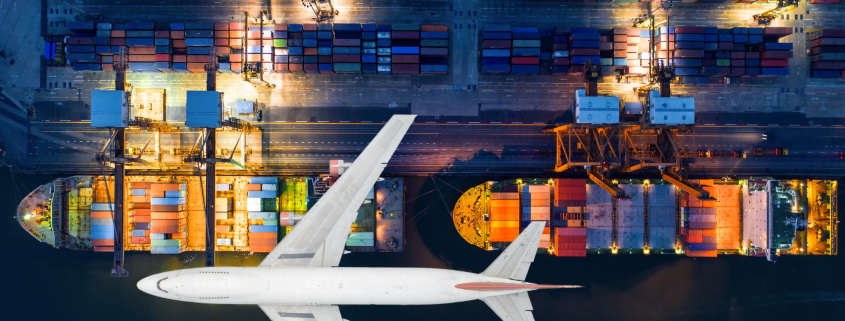2021 Supply Chain Survival Guide
With COVID-19 still looming, its repercussions continue to overshadow the US economy affecting businesses and consumers alike. High gasoline prices, inflated grocery costs, and crazy shipping times are quickly becoming the new normal for the foreseeable future. In an industry dependent on production materials, it remains difficult to give or receive accurate information on material availability and delivery timelines when they change by the day and in some cases, the hour. At CCG, we continue to work diligently to offer the best service to our customers while maintaining transparency about ongoing supply chain issues.
The major source of this supply chain headache is San Pedro Bay’s Port of Los Angeles. The port has long been a bustling center of commerce for the United States and the world. Its proximity to major freight railways, deep waters, and being a stone’s throw from China (as shipping logistics go) have earned it the title of being the busiest port in the United States. The Port of Los Angeles, combined with the Port of Long Beach, form the San Pedro Bay Port Complex which accounts for 40% of US container imports per year, totaling about 48,000 shipping containers per day. Last January, the complex had all but stopped functioning as a result of complications from the pandemic—creating a bottleneck the magnitude of which has never before been seen. Over forty ships sat in the San Pedro Bay, some for weeks, waiting to unload goods to be shipped across the country. To compound the issue, there was a massive surge in shipping volume as retailers attempted to catch up with increasing demand as businesses reopened and people resumed their daily lives. Not to mention the ever-increasing number of people relying solely on e-commerce for the delivery of products. Additionally, infection rates among port workers continued to increase with almost 12% of the workforce out in one day—an estimated 1,800 employees. Fast forward to November 2021, there are over 100 cargo ships off the coast of LA waiting to unload. This is a record-breaking number that has crippled the normal supply chain given that cargo ships normally have no wait at port. The number of ships will continue to increase until the labor force replenishes and there are workers to unload the cargo at a normal rate.
So, what does this mean for our economic supply chain and what can businesses do in the meantime? Right now, this bottleneck is causing uncertainty and confusion about the availability of goods across all industries. In the printing industry, shortages of paper, toner, and ink are driving up prices and creating frustrating wait times. In the promotional products industry, just about every product you can think of is out of stock or limited in quantity as companies wait for inventory to arrive from the ports. Often, products or materials that are in stock one day are out of stock the next with no end in sight. With the holiday season here, there is even higher demand for these goods. The best way to deal with this situation is to remain flexible and to plan. Here are 5 tips for surviving the current supply chain crisis:
- Be flexible with branding. Branding items increases timelines further with many embroiderers and screen printers operating at full capacity and working overtime. Consider branded stickers on items or branding one item in a gift box instead of every item.
- Order in advance. If you ordered holiday gifts in September you’d probably have them by now. Avoid the hassle and stress of OUT OF STOCK by securing materials ahead of time.
- Consider lesser-known brands. Huge name brands like YETI and Under Armour are almost impossible to source right now. Consider private label brands which offer availability and customization without compromising quality.
- Stick to USA-made brands. Companies that source and produce in the USA have shorter shipping times than those overseas which means less wait time for you.
- Remember everyone, up and down the supply chain, is affected by this predicament. With a little patience and understanding, we will all get through this together!
By Marley Niesz



